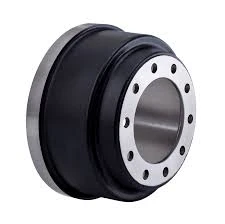
-
 Afrikaans
Afrikaans -
 Albanian
Albanian -
 Amharic
Amharic -
 Arabic
Arabic -
 Armenian
Armenian -
 Azerbaijani
Azerbaijani -
 Basque
Basque -
 Belarusian
Belarusian -
 Bengali
Bengali -
 Bosnian
Bosnian -
 Bulgarian
Bulgarian -
 Catalan
Catalan -
 Cebuano
Cebuano -
 Corsican
Corsican -
 Croatian
Croatian -
 Czech
Czech -
 Danish
Danish -
 Dutch
Dutch -
 English
English -
 Esperanto
Esperanto -
 Estonian
Estonian -
 Finnish
Finnish -
 French
French -
 Frisian
Frisian -
 Galician
Galician -
 Georgian
Georgian -
 German
German -
 Greek
Greek -
 Gujarati
Gujarati -
 Haitian Creole
Haitian Creole -
 hausa
hausa -
 hawaiian
hawaiian -
 Hebrew
Hebrew -
 Hindi
Hindi -
 Miao
Miao -
 Hungarian
Hungarian -
 Icelandic
Icelandic -
 igbo
igbo -
 Indonesian
Indonesian -
 irish
irish -
 Italian
Italian -
 Japanese
Japanese -
 Javanese
Javanese -
 Kannada
Kannada -
 kazakh
kazakh -
 Khmer
Khmer -
 Rwandese
Rwandese -
 Korean
Korean -
 Kurdish
Kurdish -
 Kyrgyz
Kyrgyz -
 Lao
Lao -
 Latin
Latin -
 Latvian
Latvian -
 Lithuanian
Lithuanian -
 Luxembourgish
Luxembourgish -
 Macedonian
Macedonian -
 Malgashi
Malgashi -
 Malay
Malay -
 Malayalam
Malayalam -
 Maltese
Maltese -
 Maori
Maori -
 Marathi
Marathi -
 Mongolian
Mongolian -
 Myanmar
Myanmar -
 Nepali
Nepali -
 Norwegian
Norwegian -
 Norwegian
Norwegian -
 Occitan
Occitan -
 Pashto
Pashto -
 Persian
Persian -
 Polish
Polish -
 Portuguese
Portuguese -
 Punjabi
Punjabi -
 Romanian
Romanian -
 Russian
Russian -
 Samoan
Samoan -
 Scottish Gaelic
Scottish Gaelic -
 Serbian
Serbian -
 Sesotho
Sesotho -
 Shona
Shona -
 Sindhi
Sindhi -
 Sinhala
Sinhala -
 Slovak
Slovak -
 Slovenian
Slovenian -
 Somali
Somali -
 Spanish
Spanish -
 Sundanese
Sundanese -
 Swahili
Swahili -
 Swedish
Swedish -
 Tagalog
Tagalog -
 Tajik
Tajik -
 Tamil
Tamil -
 Tatar
Tatar -
 Telugu
Telugu -
 Thai
Thai -
 Turkish
Turkish -
 Turkmen
Turkmen -
 Ukrainian
Ukrainian -
 Urdu
Urdu -
 Uighur
Uighur -
 Uzbek
Uzbek -
 Vietnamese
Vietnamese -
 Welsh
Welsh -
 Bantu
Bantu -
 Yiddish
Yiddish -
 Yoruba
Yoruba -
 Zulu
Zulu
cars that still use drum brakes
Cars That Still Use Drum Brakes A Look into Traditional Automotive Engineering
In an era dominated by advanced automotive technology and sleek designs, the persistence of drum brakes in some vehicles might seem surprising. While most modern cars are equipped with disc brakes, certain models still rely on traditional drum braking systems. This article delves into the characteristics, advantages, disadvantages, and the reasons behind the continued use of drum brakes in certain vehicles.
Understanding Drum Brakes
Drum brakes operate through a simple mechanism where brake shoes press against the inside surface of a rotating drum to create friction, ultimately slowing down the vehicle. Unlike disc brakes, which use a rotor and caliper system, drum brakes can be more compact and often allow for a more straightforward design that's less susceptible to water ingress.
Common Applications
Traditionally, drum brakes have been used in the rear wheels of many vehicles, especially in budget-friendly and older models. Cars such as subcompact sedans, vans, SUVs, and trucks produced by manufacturers like Toyota, Honda, and Ford still feature drum brakes in their designs. Additionally, some commercial vehicles, like delivery trucks and buses, also use drum brakes for their durability and reliability under load.
Advantages of Drum Brakes
1. Cost-Effective The manufacturing cost of drum brakes is generally lower than disc brakes, making them a cost-effective option for automakers. This reduces the overall price of budget vehicles, which are often designed to attract price-sensitive consumers.
2. Space Efficiency Drum brakes can be smaller and lighter than their disc counterparts, making them suitable for compact cars and specific designs where space is at a premium.
3. Effective in Certain Conditions Drum brakes provide excellent stopping power under certain conditions, especially when dealing with heavier loads. They are less likely to fade under prolonged braking, which can be advantageous in trucks and SUVs.
cars that still use drum brakes

Disadvantages of Drum Brakes
Despite their advantages, drum brakes also have notable drawbacks
1. Heat Dissipation Drum brakes tend to dissipate heat less effectively than disc brakes, which can lead to brake fade during intense usage, such as high-speed driving or downhill journeys.
2. Maintenance Drum brake systems can be more complicated and time-consuming to service. Brake shoe replacement often requires more labor compared to simply swapping out brake pads for disc brakes.
3. Performance Limitations In high-performance scenarios, drum brakes can be outperformed by disc brakes, which offer better stopping power and responsiveness. This is why most sports and performance vehicles exclusively utilize disc brake systems.
4. Less Effective in Wet Conditions Although modern drum brakes have improved in performance, they still do not perform as well as disc brakes in rainy or wet conditions due to their design.
Why Drum Brakes Are Still Used
The continued use of drum brakes can often be attributed to factors such as cost, application, and design philosophy. Many manufacturers prioritize providing economical options for entry-level cars, where the perception of value outweighs the need for cutting-edge technology. Furthermore, for vehicles that carry heavy loads or require steady braking over long durations, drum brakes prove to be viable options.
In summary, while drum brakes may seem outdated in the face of modern automotive innovations, they still hold relevance in specific applications. They provide benefits such as cost-effectiveness, reliability, and satisfactory performance for certain types of vehicles. As the automotive industry evolves, it will be interesting to see if drum brakes continue to hold a niche or gradually fade away, making way for newer technologies. Until then, these traditional systems remain a testament to decades of engineering philosophy that balances performance, cost, and practicality.
-
Rear Drum Brakes Maintenance TipsNewsAug.04,2025
-
Key Components Affecting Brake Drum FunctionNewsAug.04,2025
-
Important Inspection for Truck Drum BrakeNewsAug.04,2025
-
How to Prepare for Changing Rear Drum BrakesNewsAug.04,2025
-
Essential Tools for Cleaning Drum Brakes ProperlyNewsAug.04,2025
-
Brake Drum Function GuideNewsAug.04,2025
-
Safety Features of Red Brake DrumsNewsAug.01,2025
